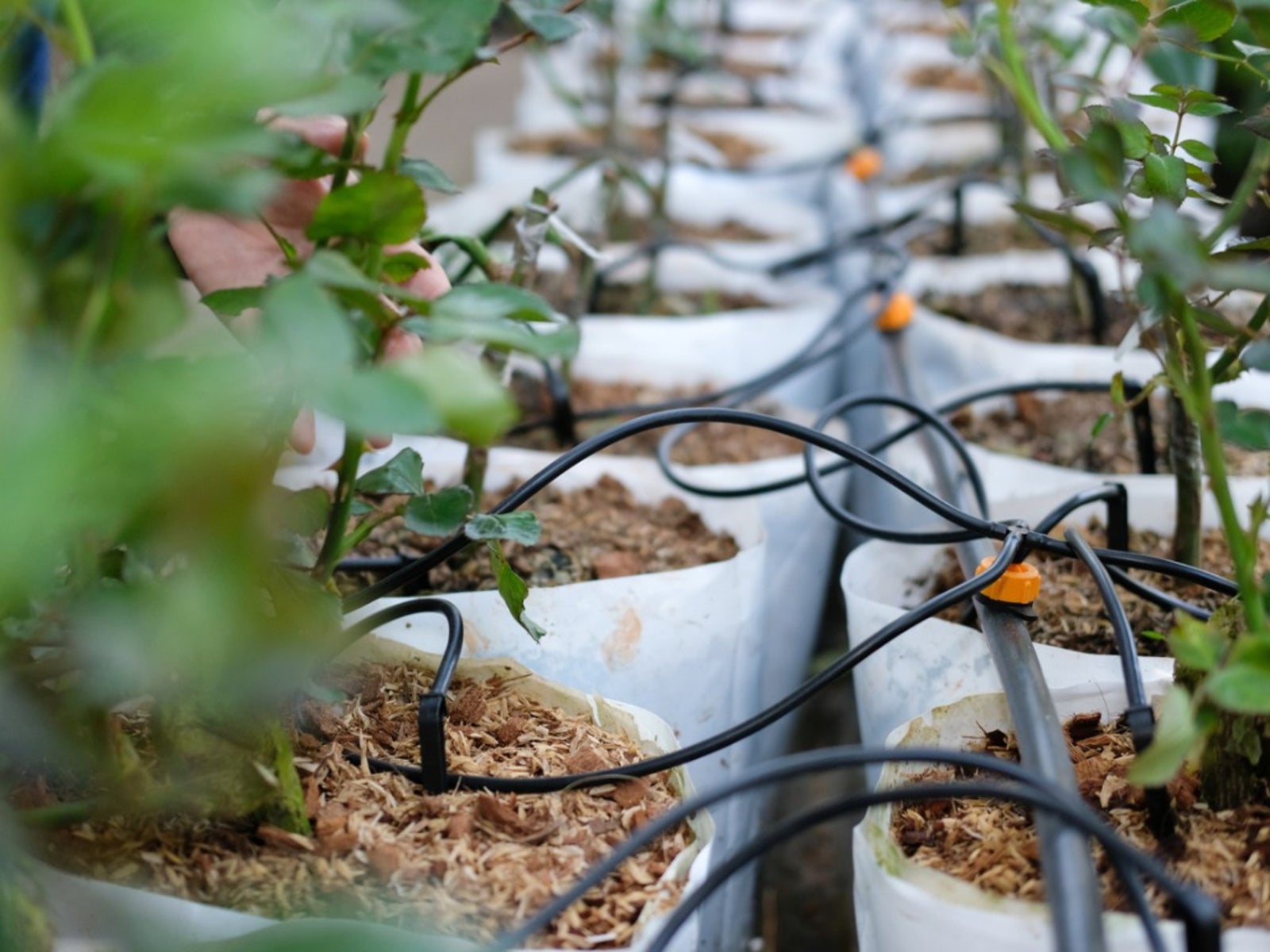Greenhouse Irrigation: Tips For Watering Greenhouse Plants


A greenhouse is a uniquely controlled environment that allows the gardener to exercise some control over nature where plants are concerned. This gives the northern gardener a longer growing season, allows outside-of-zone plants to be cultivated, protects tender starts and newly propagated plants, and generally creates the ideal growing zone for a host of plant life. Greenhouse watering systems are important parts of creating this ultimate growing climate.
Greenhouse Irrigation
Water for greenhouses may be piped in professionally or brought in through a hose or drip system. Whichever method you use in your approach, the creation of timing, flow amounts, zones, and type of delivery are all part of greenhouse irrigation.
Simple Water for Greenhouses
Unless you are growing xeriscape plants, your greenhouse denizens need water. Greenhouse watering systems may be sophisticated in-ground plumbing constructions or just a simple hose and some sprayers. Hauling water into the structure and hand watering is as easy as it gets but can be tiring. A simple method to use is capillary mats. You simply place them under your pots and flats, and they ooze water slowly, which the drip holes of the containers take up to the plant roots. This is called sub-irrigation and reduces evaporation and prevents overwatering, which may promote rot and fungal disease. The excess water is collected by plastic liners or a flood floor that directs the water back into the system to reuse for watering greenhouse plants in other drip lines.
Drip Greenhouse Irrigation
Not all plants need the same amount or frequency of water. Over or underwatering can cause plant health problems. To prevent this, install a simple drip system, which can be used to direct larger or smaller flows of water directly to pots or flats. You can regulate this type of water for greenhouses with a timer and flow gauge. Systems start with a baseline and then peripheral feeder lines. Off each feeder line is micro-tubing directed straight to the plant at the root line of the soil. You can add or subtract micro-tubing as needed and use the drip or spray heads necessary to deliver the amount of water each plant needs. This is an inexpensive and easy system to maintain for watering greenhouse plants.
Professional Greenhouse Watering Tips
Even if you just have the most rudimentary irrigation system, take some greenhouse watering tips from the pros for a more efficient structure.
- Group plants with similar watering needs together.
- Apply 10 to 15 percent more water than a container can hold and use a collection mat for excess runoff.
- Unless you have a greenhouse full of the same crops, don't use overhead watering. It is wasteful and not useful for a wide variety of plants with different water needs.
- Install a collection tank for recycled water. To minimize your water bill, use drip systems connected to a rain barrel or natural pond.
- Greenhouse watering systems may take some time to settle into a routine. Once you have the needs of each kind of plant taken care of and can deal with excess moisture in a conservative manner, the duration and frequency of irrigation can be determined, and delivery can become habitual via a timer or other simple monitoring device. The whole process will reduce the need to haul water in and hand irrigate, which can be time-consuming and exhausting.
Sign up for the Gardening Know How newsletter today and receive a free copy of our e-book "How to Grow Delicious Tomatoes".

Bonnie Grant is a professional landscaper with a Certification in Urban Gardening. She has been gardening and writing for 15 years. A former professional chef, she has a passion for edible landscaping.